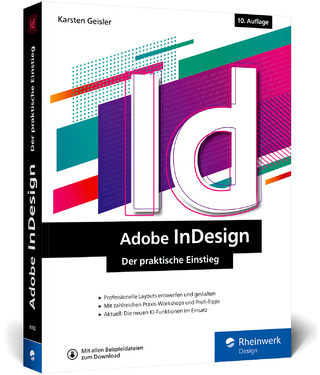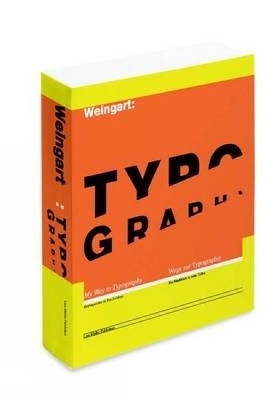
Pagemaker 7 for Windows and Macintosh
Peachpit Press Publications (Verlag)
978-0-201-77584-6 (ISBN)
- Titel ist leider vergriffen;
keine Neuauflage - Artikel merken
Adobe PageMaker 7.0 delivers the features you've asked for: seamless integration with Adobe Photoshop and Illustrator, the ability to merge text and images from database and spreadsheet applications, and ways to view and create PDFs--and even open and edit QuarkXPress documents--directly in PageMaker, to name just a few. PageMaker 7.0 for Windows and Macintosh: Visual QuickStart Guide takes you step-by-step through these and all the other key features of this award-winnning page-layout stalwart.
Novices and pros alike will find this an indispensable guide to the latest version of PageMaker. If you're new to the program--or to page layout entirely--you can start with PageMaker basics: its desktop environment, creating a new document, and working with layouts, margins, and palettes. You'll never get lost in dense text or jargon. The book's clear, concise directions and plentiful screenshots ensure that you stay on track. Those who've worked with previous versions of PageMaker can use the page tabs to delve into more advanced topics, like the intricacies of type management, working with graphics, and putting the finishing touches on files for output in print or on the Web.
@AUTHBIO= Ted Alspach is considered one of the industry's leading experts on graphics and desktop publishing, and has been a featured speaker at several conferences, including MacWorld Expo and Seybold Seminars. He is the author of more than 20 books, including PageMaker 6.5 Plus for Window: Visual QuickStart Guide and PDF with Acrobat 4: Visual QuickStart Guide.
Introduction.
1. PageMaker Basics.
What is Page Layout? Word Processing with PageMaker. Using Graphics with PageMaker. The File Menu. The Edit Menu. The Layout Menu. The Type Menu. The Element Menu. The Utilities Menu. The View Menu. The Window Menu. The Help Menu.
2. Working with Files.
Launching PageMaker. Creating a New Document. The Document Setup Dialog Box. Setting a Document's Size. Setting a Document's Margins. Saving a Document. Changing a Document's Name. Reverting to an Older Version of a Document. Closing a Document. Opening a Document. Quitting or Exiting PageMaker.
3. PageMaker Screen.
Viewing the Pasteboard. The Toolbox. PageMaker's Screen. Showing Rulers. Moving the Ruler Origin. Snapping to Rulers. Changing the Default Measurement System. Overriding Measurements. Working with Palettes. Working with the Control Palette. Hiding All Palettes. Combining Palettes. Performing Mathematical Operations. Viewing at Actual Size. Viewing at Fit in Window. Zooming One Step at a Time. Custom Zooming. Panning. Setting a Document's Preferences. Setting Application Preferences. Accessing More Preferences.
4. Text.
Accessing the Text Tool. Creating Text Blocks. Changing a Text Block's Shape. Creating Linked Text Blocks Manually. Creating Linked Text Blocks Automatically. Placing Text. Changing Import Options. Deleting Text Blocks. Selecting Text. Placing Text in a Frame. Linking Frames Containing Text. Linking Empty Frames. Attaching Text to a Frame. Separating Text from a Frame. Setting Frame Options. Exporting Text. Controlling Hyphenation. Counting Words. Checking Spelling. Finding Text. Replacing Text. Replacing Text with Character Formats. Replacing Text with Paragraph Formats.
5. Character Formatting.
Formatting Characters with the Type Menu. Formatting Characters with the Character Specifications Dialog Box. Formatting Characters with the Control Palette. Using Small Caps. Changing Case. Using Superscript and Subscript. Using Horizontal Scaling. Using Baseline Shift. Adjusting Leading. Kerning. Adjusting Tracking. Changing Text Color. Adding Tints to Text.
6. Paragraphs and Tabs.
Applying Paragraph Formats with the Menu. Applying Paragraph Formats with the Dialog Box. Applying Paragraph Formats with the Control Palette. Applying Indents. Applying Hanging Indents. Applying Space between Paragraphs. Creating Paragraph Rules. Using Paragraph Spacing. Controlling Widows and Orphans. Applying Tabs. Understanding Tab Types. Applying Tab Leaders.
7. Styles.
The Styles Palette. Applying a Style. Defining a New Style. Defining a New Style with the Control Palette. Modifying a Style. Duplicating a Style. Deleting a Style. Cascading Styles. Basing Styles on Other Styles. Merging Styles. Importing Styles. Importing Styles When Placing Text.
8. Drawing.
Drawing Lines. Drawing Rectangles or Ellipses. Drawing a Rounded-Corner Rectangle. Drawing Frames. Drawing a Polygon Automatically. Drawing a Polygon Manually. Changing an Object's Size. Changing an Object into a Frame. Changing Fills. Changing Strokes. Changing Fill and Stroke. Creating Custom Strokes.
9. Placing Images.
Supported File Formats. Placing Images. Wrapping Text. Customizing Text Wrap. Moving Placed Images. Resizing Placed Images. Cropping Placed Images. Embedding an Image. Changing the Graphics Display. Using Image Control. Placing Inline Graphics. Adding Filters to PageMaker. Applying Filters to Images.
10. Transferring PageMaker 7 Files.
Copy and Paste to PageMaker. Drag and Drop to PageMaker. Importing PDF Files. Converting QuarkXPress or Publisher Documents. Changing Conversion Settings. Viewing a Conversion Log. Printing a Conversion Log. Using the Publication Converter Plug-in. Transferring Files across Platforms. Matching Missing Fonts.
11. Colors.
Applying Color to Text. Applying a Fill Color. Applying a Stroke Color. Using [None] as a Color. Changing the [Paper] Color. Applying the [Registration] Color. Applying a Tint. Understanding Color Models. Making a Color into A Process Color. Making a Color into a Spot color. Adding Pantone Colors. Creating a New Color. Creating a Color Tint. Removing a Color. Replacing a Color. Limiting Colors Imported with EPS Graphics. Overprinting.
12. Text Flow and Story Editor.
Setting Column Guides. Balancing Columns. Autoflow. Adding Continued Lines. Viewing Stories in the Story Editor. Creating a Story in the Story Editor. Viewing Invisible Characters. Viewing Paragraph Styles. Changing the Story Editor's Font Display.
13. Object Management.
Using the Control Palette. Moving Objects with the Control Palette. Scaling an Object to a Specific Size. Scaling an Object by Percentage. Scaling an Object Proportionately. Rotating an Object. Skewing Objects. Flipping Objects. Calculating with the Control Palette. Creating Ruler Guides. Using the Grid Manager. Aligning Objects. Distributing Objects. Changing the Stacking Order. Grouping Objects. Locking an Object's Position. Masking Objects. Using Paste Multiple. Using Power Paste. Using Paste Special. Making Objects Non-Printing.
14. Layers.
Showing the Layers Palette. Creating a New Layer. Moving an Object to a Layer. Creating an Object on a Layer. Removing a Layer. Selecting All Objects on a Layer. Locking Layers. Hiding Layers. Layer Shuffling.
15. Working with Pages.
Going to a Specific Page. Inserting Pages. Removing Pages. Sorting Pages. Changing the Start Page of a Publication. Automatic Page Numbering.
16. Master Pages.
Understanding Master Pages. Showing the Master Pages Palette. Creating Master Pages. Adding Objects to a Master Page. Applying a Master Page. Applying a Master Page to Multiple Pages. Duplicating a Master Page. Deleting a Master Page. Displaying Master Page Items.
17. Merging Data.
Understanding Data Merges. Creating Data Source Files. Selecting a Data Source. Inserting Field Placeholders. Previewing the Data. Viewing a Specific Record. Merging Records.
18. Book Functions.
Creating a Book Publication List. Creating a Table of Contents Style. Creating a Table of Contents. Creating a New Publication for the Table of Contents. Creating an Index Entry. Showing and Index. Creating an Index.
19. Web Pages.
Understanding the HTML Export Options. Exporting to HTML. Viewing an HTML Page. Adding a Link to a Page. Editing a Link. Removing a Hyperlink. Formatting Hyperlinks. Setting Online Preferences. Viewing Links.
20. PDF Files.
Understanding Portable Document Format. Exporting to PDF. Distilling PostScript Files Manually. Adding Document Information. Changing Distiller Options. Setting Security Options.
21. Printing.
Checking the Links Manager. Printing a Document. Printing Specific Page Ranges. Printing to Files. Printing Color Separations. Printing a Specific Separation. Printing Crop Marks. Defining a Printer Style. Printing Using a Printer Style. Enlarging or Reducing a Printout. Trapping.
Appendix A: Macintosh Shortcuts.
Appendix B: Windows Shortcuts.
Index.
| Erscheint lt. Verlag | 30.11.2001 |
|---|---|
| Verlagsort | Berkeley |
| Sprache | englisch |
| Gewicht | 513 g |
| Themenwelt | Informatik ► Grafik / Design ► Desktop Publishing / Typographie |
| ISBN-10 | 0-201-77584-0 / 0201775840 |
| ISBN-13 | 978-0-201-77584-6 / 9780201775846 |
| Zustand | Neuware |
| Informationen gemäß Produktsicherheitsverordnung (GPSR) | |
| Haben Sie eine Frage zum Produkt? |
aus dem Bereich


